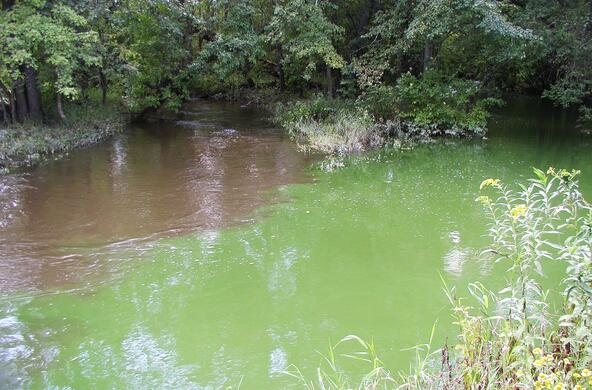
Global warming + polluted runoff = greater risk of algae outbreaks.
“This beach is closed due to an algal bloom.” These signs are becoming a common sight, and that’s bad news for boaters, swimmers, local and regional economies, and drinking water supplies. In some cases, toxins produced by the algae can compromise drinking water supplies, kill aquatic life, and poison pets.
Warming temperatures and nutrient-rich runoff from treated lawns and agricultural operations fuel algal growth and are a recipe for green lakes and other freshwater bodies. Climate change and development are increasing the frequency of both algal blooms and toxic cyanobacteria outbreaks.
Identifying tipping points is essential to guiding sound freshwater management.
Using remote sensing to forecast blooms. Using imagery from satellites and drones, Cary scientists are collecting data on lakes throughout the Northeast to predict and monitor algal blooms before they turn harmful.
Exploring toxic blooms in pristine lakes. Cyanobacteria can also thrive in unpolluted lakes; the reason is an ecological puzzle. By studying cyanobacteria in these systems, we are working to identify environmental factors that signal impending blooms.
Cary is working to keep freshwater ecosystems healthy.
An harmful algal bloom early warning system was initiated for the Hudson River in 2022. In collaboration with the Hudson River Environmental Conditions Observing System (HRECOS), sensors to measure chlorophyll and phycocyanin were deployed in the river. These measurements can be used to predict when a bloom may occur.
By developing automated monitoring systems that forecast algae blooms, we can help resource managers stop outbreaks before freshwaters are forced to close. Cary research has shown that algal blooms can be reversed and outbreaks thwarted if proper action is taken.






